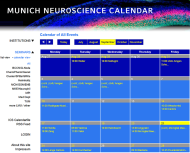Links from biology to technical solutions
As biological and technical systems are governed by closely related physical laws, their sensorimotor control mechanisms are similar. The biological principles that have evolved over millions of years continue to serve as inspiration for new technical solutions. Here the human ocular motor system is exemplary. Visual exploration is made possible by the use of voluntary saccades, when the eyes are quickly moved from one visual target to another, and voluntary smooth pursuit, when the eyes follow a moving target.
The vestibulo-ocular reflex relies on inner ear sensors that signal both linear accelerations and angular head velocities to the brain. This velocity information is transformed mathematically by integration into a positional signal, which is then inverted and delivered to the eye muscles. During head movements, the biological reflex moves the eyes in their orbits in the opposite direction to the head motion, thus ensuring a stable projection of the visual scene onto the retina. A similar mechanism becomes active when large-field visual stimuli are moved in front of an observer (optokinetic reflex).
Neurologists and engineers have together developed a new camera system for surgeons, which looks where the eyes look (Figure 6). The biological ocular motor system controls the orientation of the optical axis of the novel head-mounted camera. To prevent perception of apparent motion of the visual scene (oscillopsia) during rapid eye and camera movements, an artificial saccadic suppression mechanism can be incorporated, which is triggered by saccade onset. This artificial motion suppression can be achieved by repeating ("freezing") the last frame acquired before saccade onset for the duration of the camera saccade. Depending on the saccade amplitude, the image has to be frozen for about 100 ms. Thus, the surgeon using this camera can move his/her head and eyes during image acquisition without having to fear image-shaking artefacts, while at the same time continuously document an operation. In addition, the vergence angle of the eyes delivers valuable information for a possible autofocus functionality, as the vergence angle directly depends on the distance from the observed object.
From biology to technical solutions: The above picture shows a new camera system for surgeons which looks where the eyes look; a technical eye inspired by biology. The user is wearing a head-mounted device equipped with video eye trackers. They consist of two laterally attached infrared video sensors and two infrared mirrors, one in front of each eye, which reflect the images of the eye to the sensors. The image information is transmitted to a video-oculography computer, which uses image processing algorithms to determine three-dimensional eye positions. The eye position is transformed into a signal for servo motors that control the optical axis of a rotatable, head-fixed camera system. Because the infrared mirrors of the eye movement detectors are transparent to visible light, the user's field of vision is not restricted. Thus, the axis of the "third technical eye" is always aligned to the axis of the user's eye (Schneider et al. 2005; Brandt et al. 2006).





